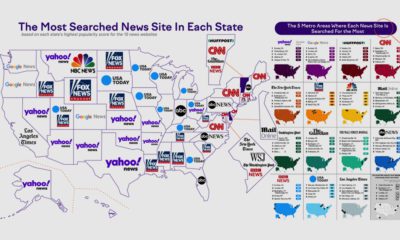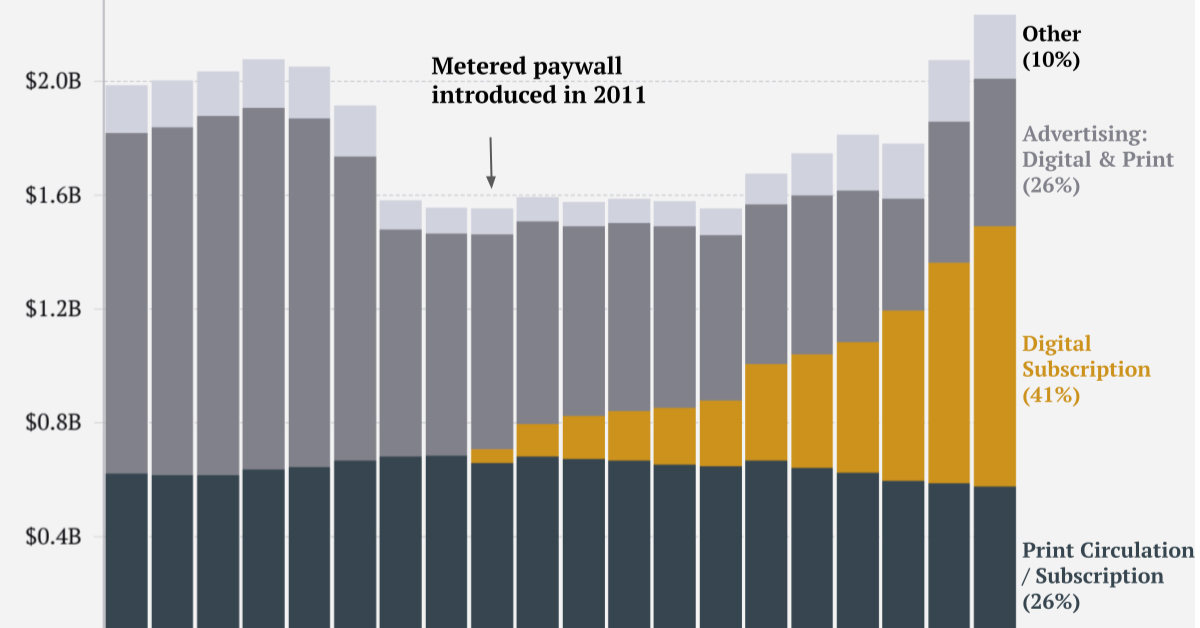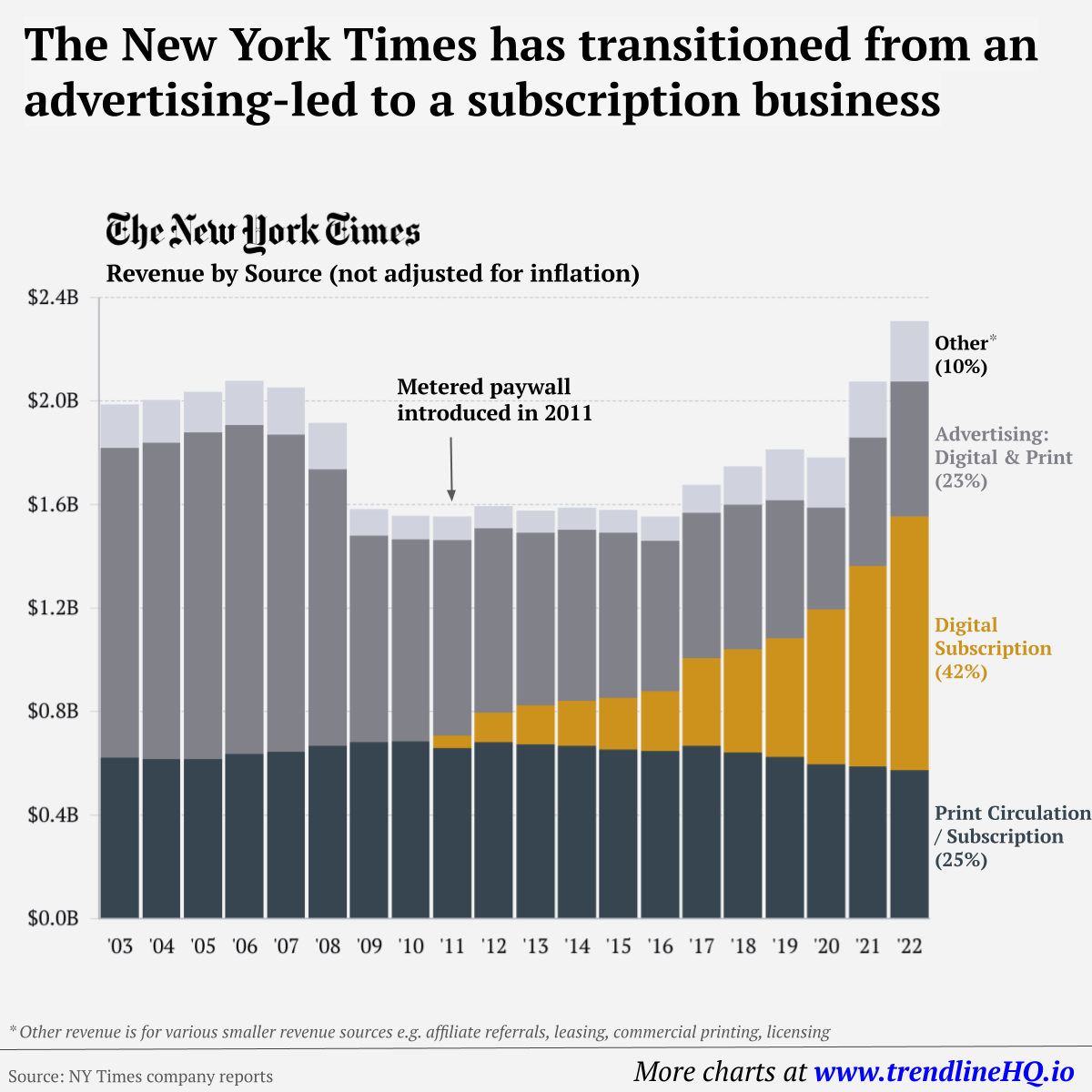For various reasons — from tech disruption to changing media consumption habits — the U.S. has seen a net loss of 1,800 local newspapers over the past 15 years. As regional newspapers are bundled together, and venture-backed digital media brands expand their portfolios, the end result is a trend towards increased consolidation. Today’s graphic, created by TitleMax, is a broad look at who owns U.S. news media outlets.
Escaping the News Desert
As outlets battle the duopoly of Google and Facebook for advertising revenue, the local news game has become increasingly difficult. As a result, news deserts have been springing up all over America:
What happens when times get tough? One option is to simply go out of business, while another traditional solution is to combine forces through consolidation. While not ideal, the latter option at least provides a potential route to revenue and cost synergies that make it easier to compete in a challenging environment.
Nation of Consolidation
Though the numbers have decreased in recent years, regional news media still reaches millions of people each day. Below is a look at the top 20 owners of America’s newspapers: Source Turnover in this segment of the market has been brisk. In fact, more than half of existing newspapers have changed ownership in the past 15 years, some multiple times. For example, the LA Times is now in the hands of its third owner since 2000, after being purchased by billionaire biotech investor Patrick Soon-Shiong. The industry may be facing another dramatic drop off in ownership diversity as the two largest players, New Media Investment Group and Gannett, are on the path to merging. If shareholders give the thumbs-up during the vote this November, Gannett will have amassed the largest online audience of any American news provider.
The Flying Vs: Vox and Vice
It isn’t just regional papers being swept up in the latest round of mergers and acquisitions — new media is getting into the mix as well. Vox Media recently inked a deal to acquire New York Media, the firm behind New York Magazine, Vulture, and The Cut. – Jim Bankoff, CEO of Vox Media Meanwhile, Vice recently acquired Refinery29 for $400 million, giving it access to a new audience skewed towards millennial women. This match-up seems awkward on the surface, but it allows advertisers to reach a broader cross-section of people within each ad ecosystem. Both companies announced layoffs in the past year, and this restructuring may help both companies win as they consolidate resources.
The Bottom Line
While news media isn’t quite as consolidated as the broader media ecosystem, it’s certainly trending in that direction. Thousands of American communities that had local newspapers in 2004 now have no news coverage at all, while remaining papers are increasingly becoming units within an umbrella company, with no direct stake in community reporting. That said, until the issue of monetization is definitively sorted out, consolidation may be the only way to keep the presses from stopping.
About the Graphic
This list of top 100 news sites was compiled using the following criteria: – The top “digital-native” news outlets by monthly unique visitors (Pew Research and ComScore, excluding sports) – The top newspapers by average Sunday circulation (Pew Research and Alliance for Audited Media) – Alexa’s top sites under the category of news (U.S. only, excluding user-generated) Note: The graphic has been updated to reflect changes in ownership for Refinery29, Gizmodo, and Jezebel. on Similar to the the precedent set by the music industry, many news outlets have also been figuring out how to transition into a paid digital monetization model. Over the past decade or so, The New York Times (NY Times)—one of the world’s most iconic and widely read news organizations—has been transforming its revenue model to fit this trend. This chart from creator Trendline uses annual reports from the The New York Times Company to visualize how this seemingly simple transition helped the organization adapt to the digital era.
The New York Times’ Revenue Transition
The NY Times has always been one of the world’s most-widely circulated papers. Before the launch of its digital subscription model, it earned half its revenue from print and online advertisements. The rest of its income came in through circulation and other avenues including licensing, referrals, commercial printing, events, and so on. But after annual revenues dropped by more than $500 million from 2006 to 2010, something had to change. In 2011, the NY Times launched its new digital subscription model and put some of its online articles behind a paywall. It bet that consumers would be willing to pay for quality content. And while it faced a rocky start, with revenue through print circulation and advertising slowly dwindling and some consumers frustrated that once-available content was now paywalled, its income through digital subscriptions began to climb. After digital subscription revenues first launched in 2011, they totaled to $47 million of revenue in their first year. By 2022 they had climbed to $979 million and accounted for 42% of total revenue.
Why Are Readers Paying for News?
More than half of U.S. adults subscribe to the news in some format. That (perhaps surprisingly) includes around four out of 10 adults under the age of 35. One of the main reasons cited for this was the consistency of publications in covering a variety of news topics. And given the NY Times’ popularity, it’s no surprise that it recently ranked as the most popular news subscription.





